
Established on the Monterey Peninsula in 1961, the Fleet Numerical Weather Facility (FNWF), known locally as Fleet Numerical, was chartered to apply the newly emerging processing power of digital computers and communications technology to provide accurate weather and ocean condition prediction services to the US Navy.
Based on the Naval Postgraduate School (NPS) campus and at a facility on Point Pinos in Pacific Grove, and using homegrown satellite communications equipment and Model #1, Serial #1 of the Control Data Corporation 1604 computer, FNWF laid the foundations for modern weather forecasting technology.
The Navy established a Numerical Weather Problems Group (Project NANWEP) in Suitland, MD, in 1958 to generate operational weather prediction products for the Navy. To take advantage of the computing capability at NPS, in March 1959, the Navy assigned NANWEP to Monterey under Capt. Paul M. Wolff, where, in 1961, it was renamed the Fleet Numerical Weather Facility (FNWF).
Wolff distinguished FNWF’s mission from other activities in the field: “Atmospheric and oceanographic analysis and prediction problems have been faced before — in the universities, in industry, in governmental agencies. To my knowledge, however, FNWF acts singularly in its treatment of the two fluids as a single, coupled system. Correct solutions to environmental problems demand this approach.” [1]
The NPS Department of Mathematics purchased its first electronic automatic digital computer, a National Cash Register NCR 102A in 1953. It was used in practically all phases of the physical sciences, including early approaches to weather simulation.

NCR 102A at NPS. Photo by Dean Vannice. Source: Calhoun: The NPS Institutional Archive
Pioneering computer architect Seymour Cray and his team built the world’s first commercially successful transistorized computer at Control Data Corporation (CDC) in Minneapolis in 1959. The central computer weighed one ton, and the console half a ton. With a clock speed of 5 microseconds, the 48-bit CDC 1604 claimed to be the fastest machine of its time.

CDC 1604 transistorized logic module. Source: Calhoun: The NPS Institutional Archive
In 1958, when the Bureau of Ships contracted to acquire ten 1604s from CDC, Cray lobbied for the first system to be delivered to Monterey. [2] And in January 1960, he personally supervised the installation of Model #1, Serial #1 of the CDC 1604 in Room 101A of Spanagel Hall.

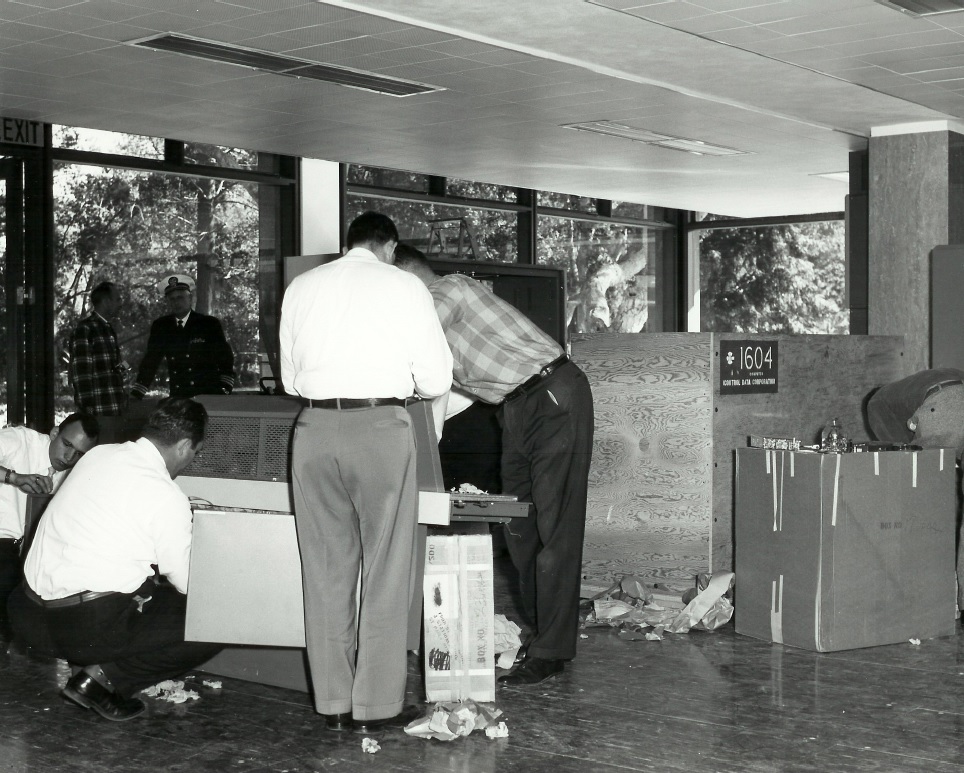
The CDC 1604 is delivered and assembled in Spanagel Hall. Source: Calhoun: The NPS Institutional Archive
"I was there when Cray sat at the 1604 console and, like a master pianist, ran through the test programs," said Edward Norton Ward, a mathematician and the first computer technician hired by Professor W. R. Church, Chairman of the Mathematics Department. "I watched and listened. When it's raining knowledge, you just hold out your hand." [3]
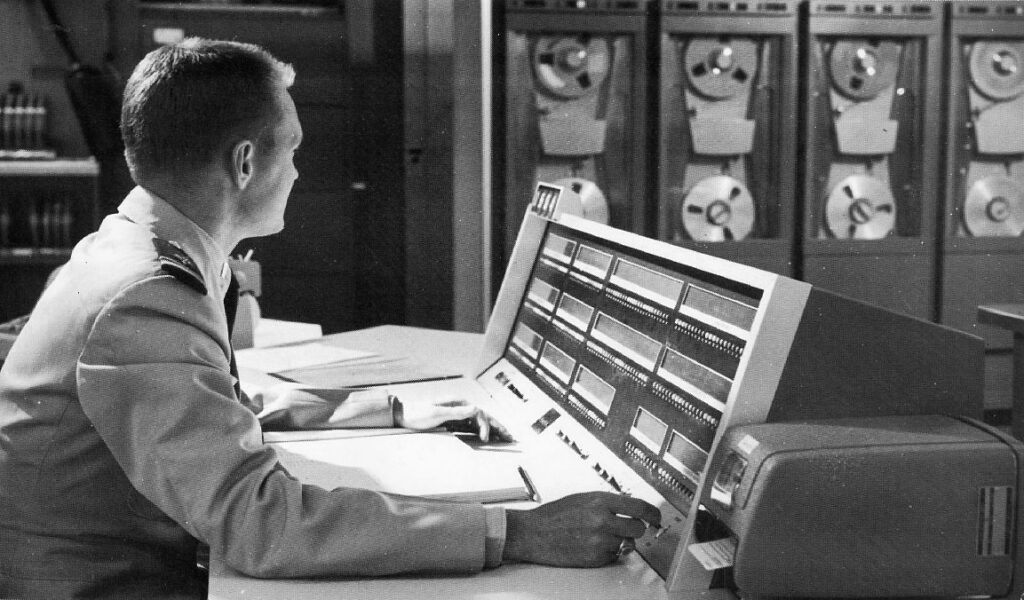
Lt Harry Nicholson at a 1604 console. Capt. Nicolson served as Commanding Officer of FNOC from 1982- 86. Source: Calhoun: The NPS Institutional Archive
According to Professor Douglas Williams who became Director of the NPS Computer Center in 1963, “It was used by submitting machine language programs on paper tape. There was no operating system and no assemblers, compilers, or utilities. I obtained a Fortran compiler—folklore says it was written by Seymour Cray.” [4] Despite its limitations, the 1604 boasted impressive computing power for the time, with 32,768 bits of 48-bit core main memory and 100,000 computations per second.
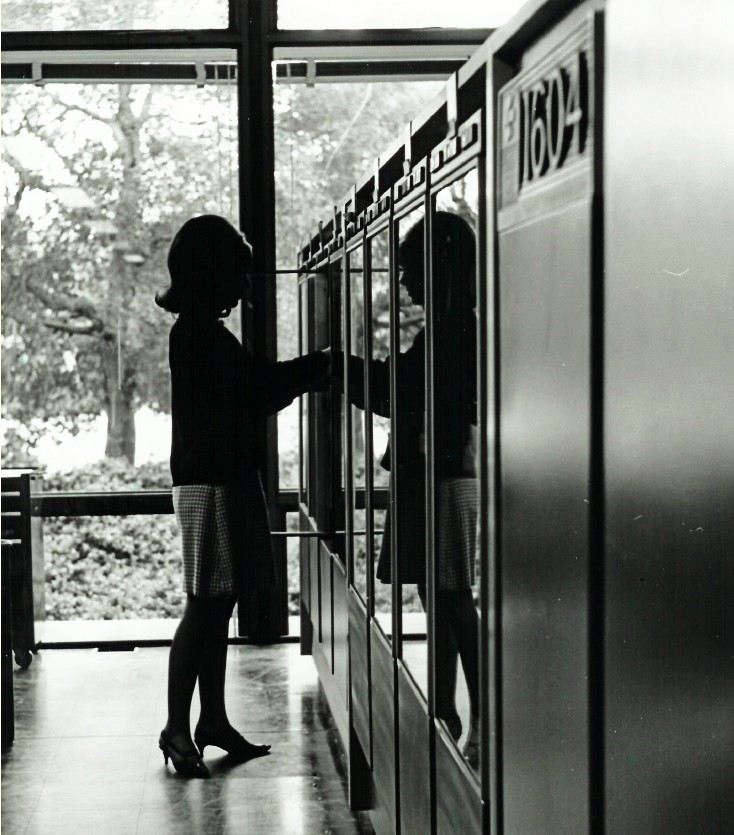
CDC 1604 tape drive storage units. Source: Calhoun: The NPS Institutional Archive
In August 1960, the Monterey Peninsula Herald reported that FNWF demonstrated “the first surface weather map to be produced by a computer … it cuts the time for compiling hemispheric weather forecasts from hours to minutes. And is 40 percent more accurate than old hand methods.”
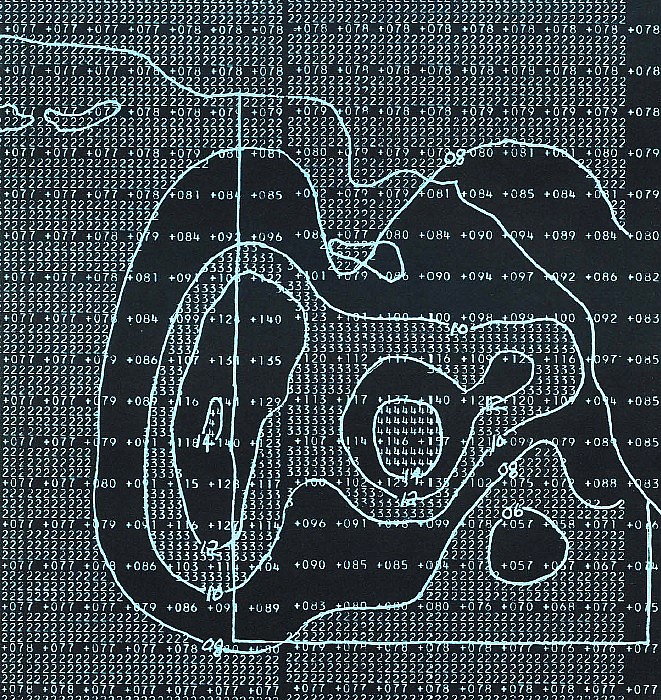
Printout shows the temperature at the sea surface and various depths. Source: Weather by Computer
FNWF acquired its own CDC 1604 in 1961, which was installed with the school’s machine in the converted lobby of the first floor of Spanagel Hall. The complete system incorporating a CDC 160A for data transmission, a Varian 530 plotter, ASR-33 teletype machines, and tape storage drives, is shown below.
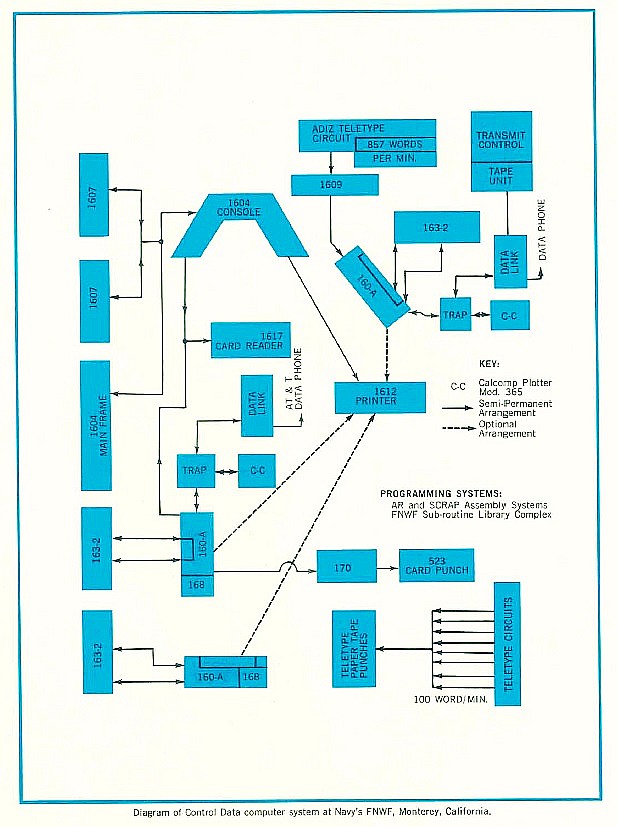
Diagram of Control Data computer system FNWF. Source: Weather by Computer
In 1963, CDC published a report, Weather By Computer, that described the FNWF operation and programs written for the 1604 that generated a broad range of weather predictions for naval operations worldwide.
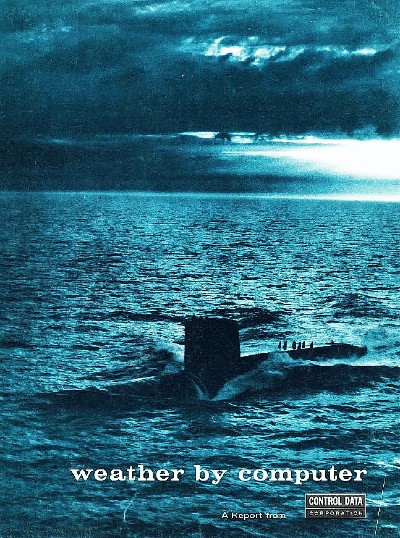
Weather By Computer. Source: Computer History Museum
To eliminate conflicts between the immediate demands of computer processing time for weather prediction and the teaching needs of the school, in 1964, FNWF built a dedicated computer center on the NPS campus. To handle the increased computational load, a CDC 3200 computer (a 24-bit version of the 1604) was purchased in October and was running at full capacity by the end of the year.
Also, in 1964, FNWF established a separate Communications Division to design, fabricate, and test special-purpose electronic communications and interface devices to serve unique requirements for receiving and transmitting real-time weather data. Administrative offices, workshops, and R&D laboratories were located in a former Navy radar training facility on Point Pinos at 1352 Lighthouse Avenue, Pacific Grove.
When NPS acquired an IBM 360 Model 67 in 1967, Model #1, Serial #1 of the CDC 1604 was transferred to FNWF and moved to Point Pinos, where it continued to serve for archival storage of weather data.
All FNWF operations were consolidated at a single site at the Navy Annex, Monterey Airport in 1974 where today, as the Fleet Numerical Meteorology and Oceanography Center (FNMOC), it serves as a primary DoD production site for computer-generated meteorological and oceanographic analysis and forecast products worldwide. The operation is highly respected, and its computing capability ranks as one of the most powerful in its field in the world.
[1] Wolff, Paul M. “Oceanographic data collection” (1968) Bulletin American Meteorological Society: Vol 49, No. 2, (February 1968), p. 96.
[2] Created by Congress in 1940, the Bureau of Ships responsibilities included supervising the design, construction, conversion, procurement, maintenance, and repair of ships and other craft for the Navy; managing shipyards, repair facilities, laboratories, and shore stations; developing specifications for fuels and lubricants; and conducting salvage operations.
[3] Honneger, Barbara, “NPS Computing: 50 Years Golden and Growing,” Calhoun: The NPS Institutional Archive.
[4] Douglas Williams, Interviews, Calhoun: The NPS Institutional Archive.
[5] The Computer History Museum collection holds a 1604 main cabinet, all three sections of the operator's console, and the core memory unit, together with numerous other related documents and manuals.
Blogs like these would not be possible without the generous support of people like you who care deeply about decoding technology. Please consider making a donation.